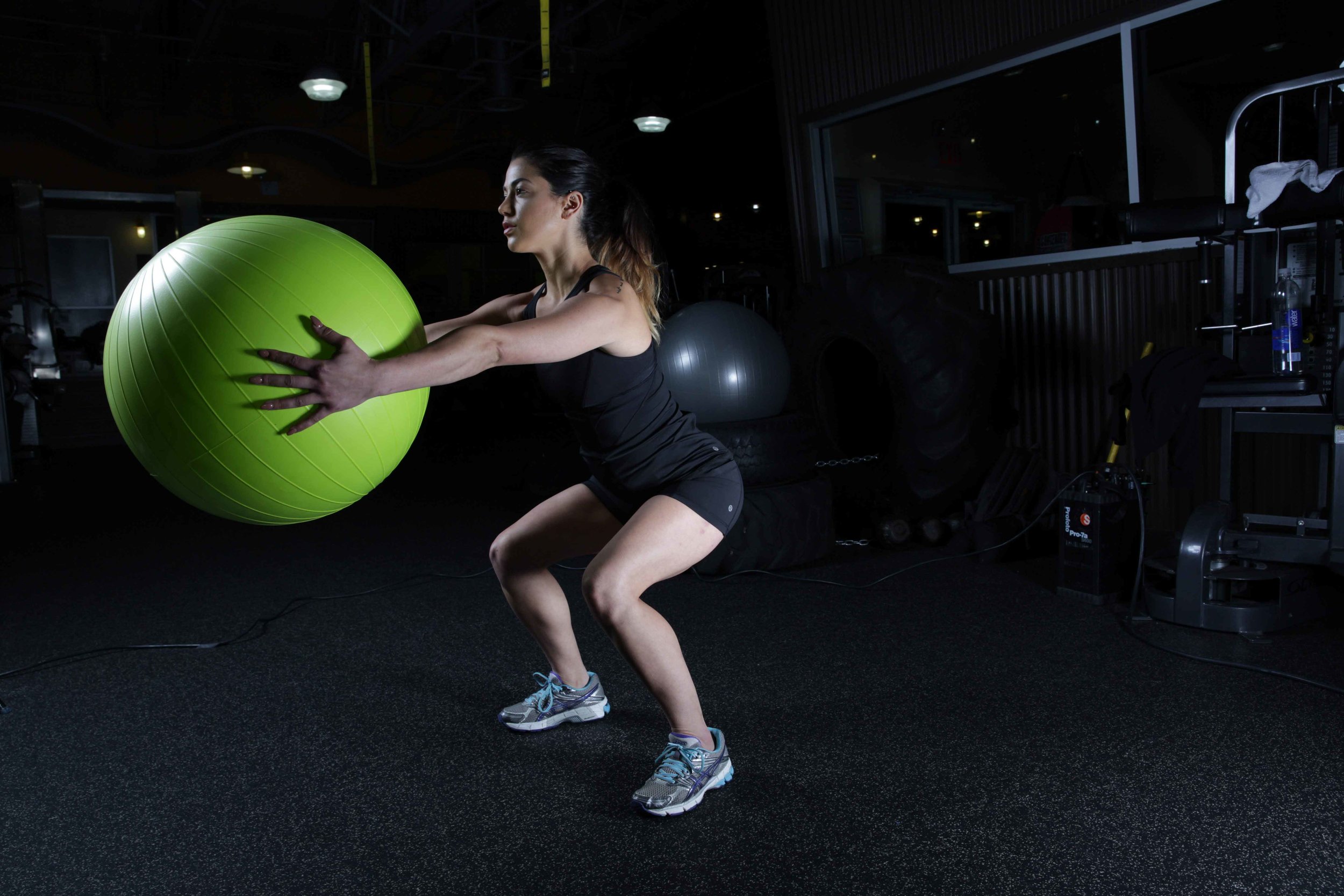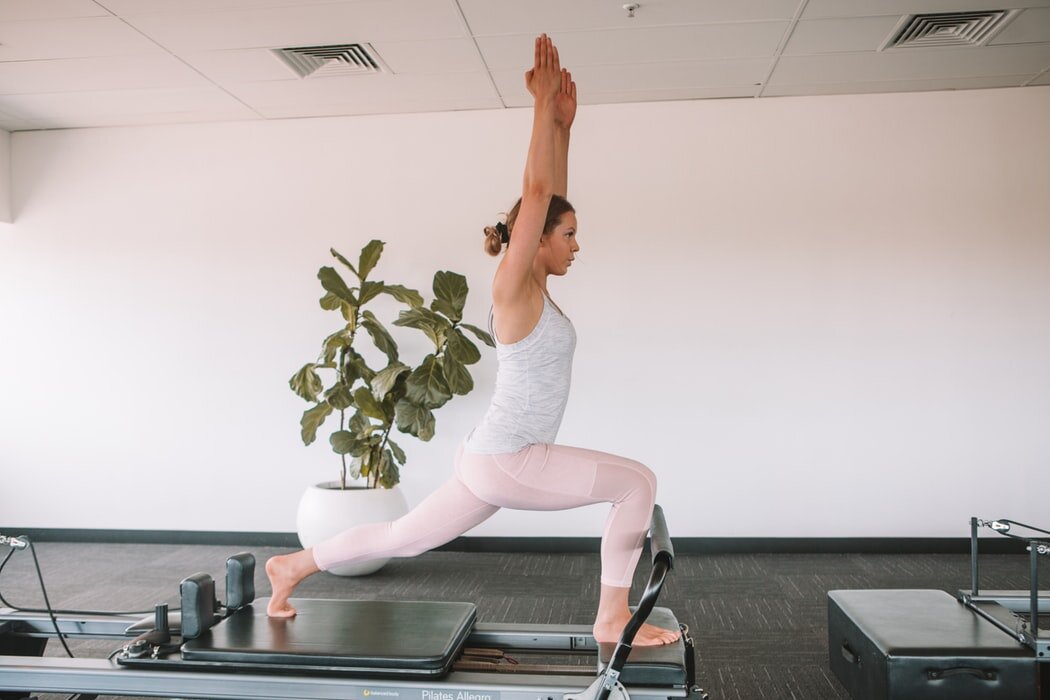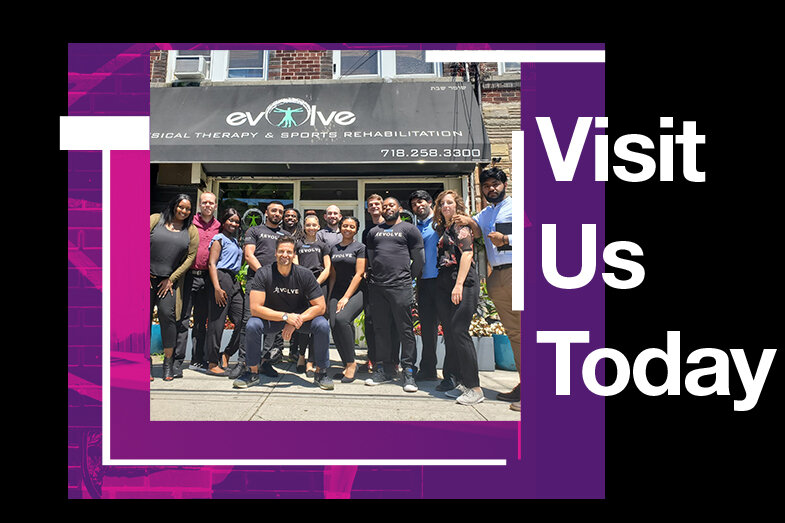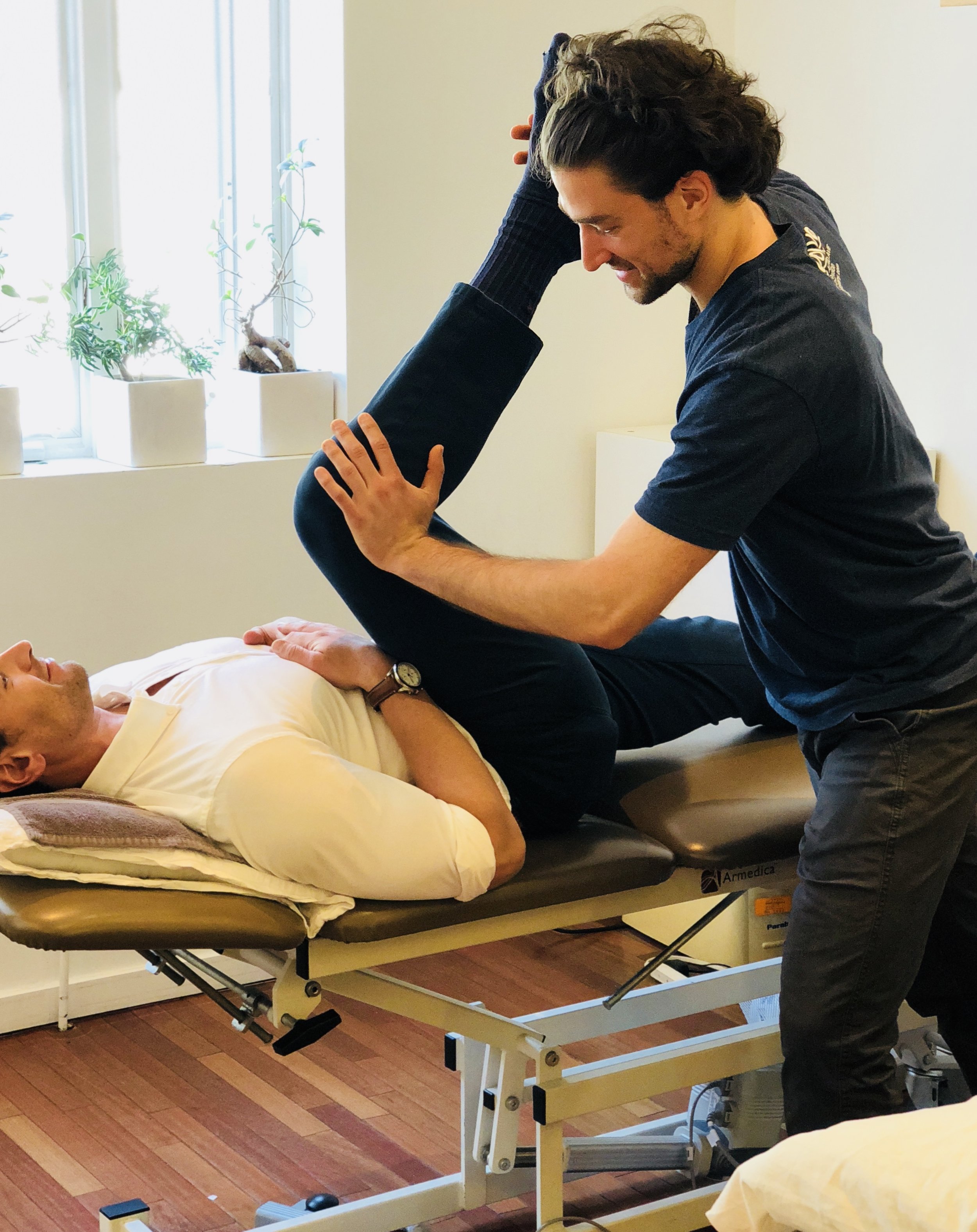
Brooklyn Physical Therapy News- Evolve NY
Preventing Back Injuries and Back Pain With Back Exercises
Have you ever experienced lower back pain? What do you do when you have it? Did you know that, contrary to popular belief, you should be doing movement exercises rather than just resting when you have back pain?
Simple Back Exercises to Get You Through the Day!
Have you ever experienced lower back pain? What do you do when you have it? Did you know that, contrary to popular belief, you should be doing movement exercises rather than just resting when you have back pain?
When we experience back pain, it is usually because of a mix of factors: tight muscles around your lower back, a poor postural alignment, and a weakness in core musculature. Here, we provided some exercises that can help you chase away your back pain:
Find Your Neutral Spine
Your spine is in “neutral” when all its segments are in good alignment. This is the most stable and strongest position of your spine, it’s important to practice being in this position to prevent pain and injuries. To find your “neutral” spine, relax and lie on your back on a firm surface. Gently tilt your pelvis forward by pushing your lower back down and flat on the surface, then tilt it all the way backwards by making an arch with your lower back. After doing the pelvic tilt, find your “neutral” by feeling the best and most comfortable position for you in between the tilts.
Focus on Breathing
There is research linking breathing to good postural alignment and lower back pain. The correct way to breathe is called diaphragmatic breathing. Take a deep breath through your nose making sure that your belly expands and not your chest. You can do this while sitting, standing, or lying on your back.
Open up Your Hips. Stretch, Stretch and Stretch
A lot of stretching is involved when dealing with back pain. Our muscles tighten up as a way of protecting themselves when they (or we) feel pain. There are three stretches you can do to help with your lower back pain:
Knee to Chest - Hug both of your knees to your chest while lying on your back on a flat surface. You should be able to feel a gentle stretch on your lower back and butt muscles. Hold this position for 10 to 15 seconds while inhaling through your nose and exhaling through your mouth.
Rotational Stretch - Lie back on the floor with your knees bent with feet flat on the floor. Make sure your shoulders are flat on the floor while you gently roll both your knees to one side of your body. Again, hold this position for 10 to 15 seconds, don’t forget about diaphragmatic breathing!
Runner’s Stretch - this position helps open up your hips and pelvis, it stretches both the front and back muscles of your legs. Step one foot forward and gently bend your knees into a low lunge until you feel a slight stretch on your back leg. It’s kind of tricky to hold your balance in this position, so you can opt to brace yourself on a table or wall. Hold it for 10 to 15 seconds.
Partial Crunches
You don’t have to do a whole sit up to strengthen your core! Partial crunches are better and friendlier for your back. Start by lying on the floor with your knees bent and feet flat. Breathe in deeply, and then as you breathe out, engage your abdominal muscles and slowly raise your head and shoulders to about 2 inches off the ground. Make sure your neck is aligned with your spine to avoid strain. If you’re just starting out, you can put your hands forward as if you’re trying to reach for your knees. As you get stronger, you can then put your hands across your chest, or behind your head. This exercise will help strengthen your core. Your core muscles have a big role in preventing lower back pain. Even though they are located in the front (in your abdomen), they help your back muscles in maintaining your upright posture.
Bridging
This exercise helps you strengthen your gluteus (butt) muscles. Lie on your back on a firm surface with your knees bent and feet flat. Take a deep breath, slowly exhale, then lift your buttocks off the floor while engaging your abdominal muscles. Make sure your shoulders stay on the floor. Then slowly lower your buttocks back to the floor and rest for a few seconds. Repeat this movement 15 times.
Supermans
This exercise will challenge the whole length of your back. Your position should literally look like Superman himself! Lie face down on the floor with your arms extended in front of the body, and your legs should also be stretched out straight. Now, try to lift both your arms and legs up off the ground. You should aim for about 6 inches gap between your legs and the ground. Keep your head up and look straight forward as you hold this position for 6 seconds.
All of these exercises are safe to do at home, but still, it’s best to see a Physical Therapist first to help you with your back pain. They will provide you with tools that can decrease or completely eliminate the pain, and teach you exercises to keep the pain from returning.
Click here to find out more information about physical therapy for back pain
About Evolve Physical Therapy in Brooklyn
Brooklyn's Premier Holistic Physical Therapy Clinics
There’s physical therapy, there’s training, and then there’s EVOLVE. We use the science of bio-mechanics merged with fitness to help our patients get better and stay better!
First we evaluate, then we heal, then we strengthen our clients so they can reach their goals, feel better, and live happier lives. We do so by utilizing a range of core techniques and specialized treatments to reduce pain, improve mobility, enhance physical strength and deal with the underlying issues, not just the pain itself.
Multiple Locations!
1-718-258-3300
What is Tennis Elbow and How Can Physical Therapy Help?
What does tennis elbow mean?
“Tennis elbow” is the nickname given to a condition known to the medical community as lateral epicondylitis (also seen ending in -osis or -algia). This name describes the region from which the pain originates on the outside of the elbow…
By Nick Mazzone, PT, DPT, CSCS
What does tennis elbow mean?
“Tennis elbow” is the nickname given to a condition known to the medical community as lateral epicondylitis (also seen ending in -osis or -algia). This name describes the region from which the pain originates on the outside of the elbow. The lateral epicondyle is the part of the upper arm bone that serves as the origin for all of the muscles that extend the wrist.
What causes tennis elbow?
Tennis elbow is considered an overuse injury. It typically occurs after repetitive stress to the involved region over time, however one traumatic incident such as a fall or work accident may also cause inflammation in this region. Tennis elbow got its name because it is a common overuse injury seen in those who play the sport. Tennis players tend to hold a tight grip on their racquets while producing powerful forces with their wrist extensor muscles. In certain cases, this may be a recipe for inflammation. Another common population that tends to get tennis elbow is the office worker. Being in a position of wrist extension while typing for prolonged periods may cause repetitive stress to the outside of the elbow.
Here is an example of what your posture should look like while in front of your computer:
How Will Physical Therapy help me?
Your physical therapist will design a specific treatment plan tailored to your needs based on your background and activity level. The program will consist of soft tissue mobilization to assist in the healing process, stretching/mobility training, functional strengthening of eccentrics (the muscle’s ability to control movement from wrist extension to wrist flexion) and grip strengthening, training of ergonomics and posture, and education on how to prevent the condition from reoccurring.
Your specific program will depend on how you acquired the condition in the first place. An office worker will be trained to alter their desk setup in order to decrease the stress on the wrist extensors. A tennis player may be prompted to consider changing the thickness of their racquet handle or the tightness of the strings. Both of these variables may help contribute to the repetitive stress that occurs during the sport since more force production is necessary to produce the desired effect when these conditions are not optimal.
This picture shows one way to stretch the wrist extensor muscles.
Click here to find out more information about physical therapy for tennis elbow
Check out this video for 3 simple exercises to help with your tennis elbow:
About-
Nick Mazzone received his Doctorate in Physical Therapy from Stony Brook University. He has a strong background in strength and conditioning and aims to bridge the gap between strength training and physical therapy. Nick believes that a lifestyle centered around physical fitness and mental well-being are vital to one’s successes and happiness. For this reason, he educates his patients on pain science and helps empower them and motivate them to reach their goals every day. You can find him at Evolve Physical Therapy in Mill Basin, Brooklyn, NY. To view some of his other content, visit drnickmazzonedpt.wordpress.com.
Resources
Main photo retrieved from https://www.mayoclinic.org/diseases-conditions/tennis-elbow/symptoms-causes/syc-20351987
Photo of bones of arm retrieved from http://cruxcrush.com/2014/06/26/climber-problems-elbow-injury/
Picture of wrist and finger extension retrieved from http://www.militarydisabilitymadeeasy.com/images/handmuscles/
Picture of ideal desk posture retrieved from xhttps://www.microsoft.com/accessories/en-us/support/ergonomic-comfort
Photo of wrist extensor stretch retrieved from https://www.therapeuticassociates.com/athletic-performance/golf/stretching-for-golfers/
What is Assisted Stretching and How can it help me?
What is Assisted Stretching?
Assisted Stretching is a hands-on method of stretching in which a person is gently supported through a series of stretches by a trained practitioner. Assisted Stretching is more effective than stretching by yourself because the practitioner stabilizes your joints in positions that allow you both to isolate and stretch one muscle at a time while expanding your fullest range of motion.
Nick Macaluso
Stretching is kind of like flossing... everyone knows they should be doing it, but who really does it? It’s one of those things that we’re all going to start making into a habit tomorrow, but somehow tomorrow never comes. To our credit though, when we get that cramp in our thigh, or piece of spinach in between our teeth, we know exactly what we need to do. But how do we identify the exact muscles that tend to cramp or spasm, and prevent it from happening? How can we isolate and stretch the muscles we hold the most tension in to prevent and alleviate pain? How can we most effectively just enhance our mobility for a higher quality of life? The answer, Assisted Stretching.
What is Assisted Stretching?
Assisted Stretching is a hands-on method of stretching in which a person is gently supported through a series of stretches by a trained practitioner. Assisted Stretching is more effective than stretching by yourself because the practitioner stabilizes your joints in positions that allow you both to isolate and stretch one muscle at a time while expanding your fullest range of motion. The benefit to being able to isolate and stretch individual muscles is to give both you and the practitioner a better understanding of where exactly your body may be out of alignment. Perhaps your low-back pain is just a result of tight hamstrings, or your sciatica is just a result of tight glutes. Both of which can be relieved from general stretching, but without the assistance of a trained practitioner, it is nearly impossible to isolate the exact muscle and relieve its tension.
Why is Assisted Stretching so productive?
Aside from being able to realign your body by isolating the muscles being stretched, Assisted Stretching is an opportunity for you to relax and repair your body and mind while still using your time constructively. Many of us after long days or weeks want nothing more than a massage to take the tension out of our backs, necks, shoulders, or hips, but aside from the relaxation, what is the massage doing to prevent that tension from returning? Most of the time, tension builds in areas of our bodies that are either overactive or misaligned due to habitual poor posture. While massages are great, if you’d rather spend your time relaxing AND simultaneously preventing the tension from returning, Assisted Stretching is for you.
Stretching is one of those things that people spend their lifetime studying and writing about because of its incredible complexity and near infinite amount of benefits. But instead of wasting your time with all that, experience the hype for yourself by scheduling a 20 minute Assisted Stretching session with Nick Macaluso at Evolve Physical Therapy. Sessions run in 20 minute increments and can last anywhere from 20 minutes to 2 hours depending on how long you would like to be stretched. While this service is open to the public, all active patients of Evolve must first speak to their therapist to ensure an Assisted Stretch is right for them.
For more information or any questions, give us a call at 718-258-3300 or contact us today!
















